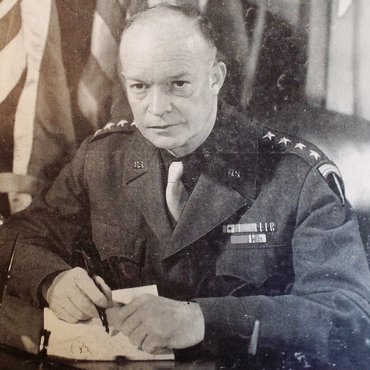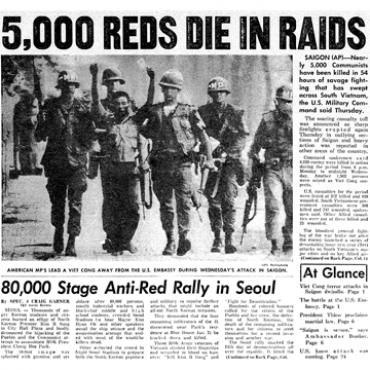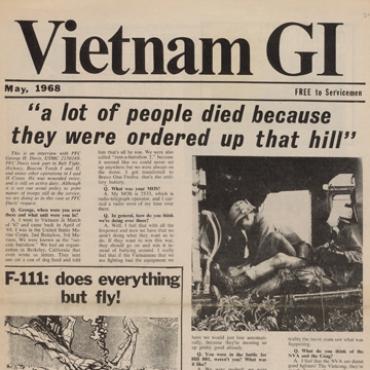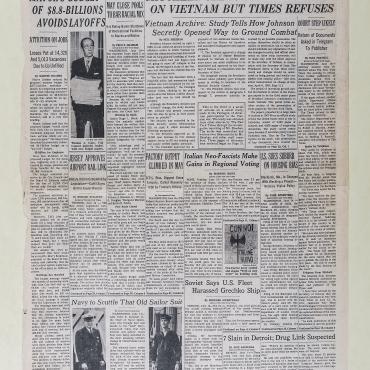'What’s News?' Video Lesson
This video, narrated by Charles Osgood, features major events in world history and shows how news affects nearly every aspect of our daily lives.
Get even more great free content!
This content contains copyrighted material that requires a free NewseumED account.
Registration is fast, easy, and comes with 100% free access to our vast collection of videos, artifacts, interactive content, and more.
NewseumED is provided as a free educational resource and contains copyrighted material. Registration is required for full access. Signing up is simple and free.
With a free NewseumED account, you can:
- Watch timely and informative videos
- Access expertly crafted lesson plans
- Download an array of classroom resources
- and much more!
- War
- 6-8
All of the images and clips are from actual news stories from the past.
- Tell students that they will learn how the Newseum categorizes news stories and explore their own ideas of ways to sort and process information.
- Check for background knowledge by asking:
- What is news?
- What stories are in the news today?
- Explain that as they watch the video, students will learn about all the different ways to report and access news today and about the news stories that shaped our history, our nation and our world.
- Hand out copies of the viewing guide worksheet. Students should read the questions before watching the video and take notes during it.
- Watch the video.
- Ask students to complete the comprehension questions (in class or for homework).
- “What’s News?” Video Lesson worksheet (download),one per student
- Internet access to watch “What’s News?” video
- “What’s News?” handout (download, optional)
You may also wish to assign one or more of these questions as short essays for homework.
- Why is news sometimes called “the first rough draft of history?”
- Are there events from this video that you recognize? Are there events in this video that you lived through? How does the fact that they occurred during your lifetime change the way you remember or feel about these stories versus the historical events depicted?
- Many of the major events in this video were represented by images. Discuss how photographs and other images are used in reporting the news. How do they make a different impression than the written word?
- Think about all the different ways the major events were presented in this video — news headlines, photographs, video clips, sound bytes from speeches and news broadcasts. How has news changed over time? Has the way we report the news affected what news is covered?
- What is your favorite way to get the news, and why? What do you think this says about you as a news consumer?
- There were many types of news media that were seen in this video. In recent years, we have seen new types of media emerge that were not featured in this video. What are those types of media? How have they changed the face of the news and how it is reported?
- What are recent stories in the news? What categories from the video do these stories fall under?
- It’s your turn to report the news! Select four to five stories from this video and create a video newscast covering these stories. Before you prepare your video, watch one of your local news stations. Notice how stories are covered and what order they come in. Think about how the stories were selected for the show. Be prepared to share your newscast with the class and to explain to the class why you picked the stories it features.
- Select two stories from the video that are unfamiliar to you. Research the stories and write a newspaper front-page story (one for each event) covering the events. Before you write the article, review a newspaper. Pay attention to what kinds of events make it on the front page. In your article, be sure to cover the whole story by answering all of the reporter’s questions — who, what, where, when, why and how — and give all the important details so that your readers can learn the important information about the event. Make sure you include any graphics, pictures or illustrations that are relevant to your stories.
- Select 10 to 15 of the key events in this video that are connected by a theme. It could be one of the categories described in the video or something else all of the stories have in common. Make a timeline of the events. For each event that you place on your timeline, include the date of the event, a brief (paragraph) description of the event and a visual representation of the event. Give your timeline a title, and be prepared to share with the class.
- Create a collage of newspaper or Internet articles of recent news stories. Choose stories that were not included in this video. Include at least two stories from each of the nine categories of news covered in this video. Be creative with your collage — you do not always have to use words to convey a story. Sometimes, images are equally as important in reporting the news. Be prepared to share why you selected each story.
- Select one key event from the video that took place before 1980. Imagine that event happening today. Create a Facebook page for that event. Your page can include wall posts from people involved in the event. You can have pictures posted on your page. Get creative and think about everything that can be done and “reported” on Facebook. Include a short paragraph with your page describing how the event may have turned out differently if this type of social media had been available in that time period.
- Cut out 20 headlines from a recent newspaper and make a collage that sorts these headlines into the nine “What’s News?” categories from the video. Be prepared to explain why you assigned each headline to its category.
- Not everything that happens in a given day is news. What makes something worthy of being in the news? Read the list of criteria for newsworthiness posted here: http://www.mediacollege.com/journalism/news/newsworthy.html. Then cut out 12 headlines and create a collage that sorts them into these five categories (timing, significance, proximity, prominence and human interest). Be prepared to explain why you assigned each headline to its category.
- Interview a journalist — it could be someone from your local newspaper, radio or TV station — about their job. Write a list of questions to ask before you meet the journalist. Share what you learn from your interview with your class.
- Explore how different media report the same story. Divide the class into groups and assign each group a different form of communication technology (video, Twitter, newspaper, blog, etc.). As a class, attend a community or school event and have each group prepare a news report on what happened. Compare the reports and discuss how the different media affected the content conveyed.
- Imagine you are the editor of a major newspaper aimed at the general public. Make a list of five stories from today’s news that you will put on your front page. Then imagine that you are the editor of an online news site aimed at teens. Make a list of five stories from today’s news that you will put on your website. Finally, imagine you are the producer of a nightly TV news program aimed at people over the age of 30. Make a list of five stories from today’s news that you will put on your show. Write a short explanation (two to three) paragraphs about how your lists compare and contrast and why you made your decisions.
-
Common Core State Standards: CCSS.ELA-LITERACY.CCRA.SL.2
Integrate and evaluate information presented in diverse media and formats, including visually, quantitatively, and orally.
-
National Center for History in the Schools: NCHS.US History.Era 10
Standard 1: Recent developments in foreign policy and domestic politics Standard 2: Economic, social, and cultural developments in contemporary United States
-
Center for Civic Education: CCE.V
A. What is citizenship? B. What are the rights of citizens? C. What are the responsibilities of citizens? D. What civic dispositions or traits of private and public character are important to the preservation and improvement of American constitutional democracy? E. How can citizens take part in civic life?










































